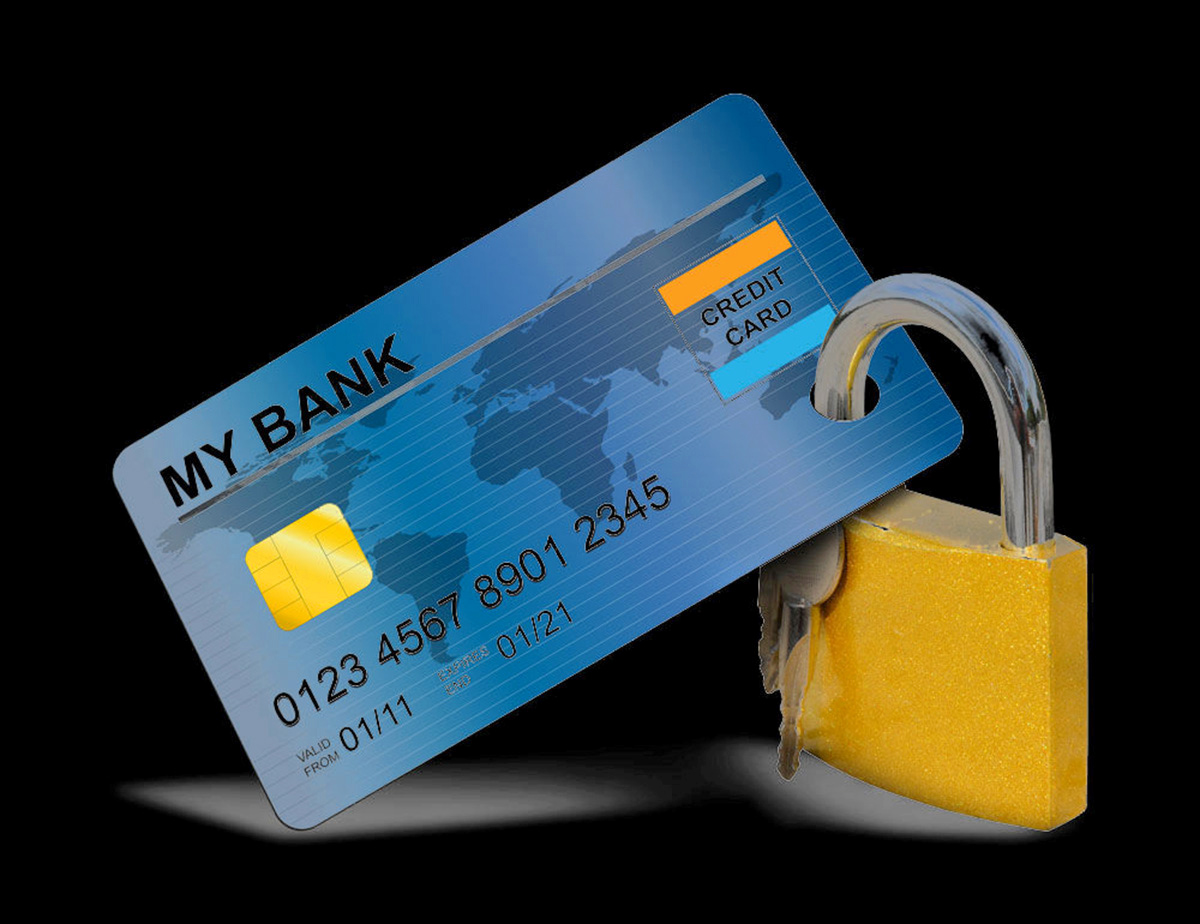

Finance
What Is A Credit Card Network
Published: October 25, 2023
Discover how credit card networks operate in the world of finance and learn about the benefits and features they offer to consumers and businesses alike.
(Many of the links in this article redirect to a specific reviewed product. Your purchase of these products through affiliate links helps to generate commission for LiveWell, at no extra cost. Learn more)
Table of Contents
Introduction
Welcome to the world of credit card networks! In today’s cashless society, credit cards have become an essential tool for making purchases, both online and offline. When you swipe, tap, or insert your credit card at a merchant’s terminal, have you ever wondered what happens behind the scenes? That’s where credit card networks come into play.
A credit card network refers to the infrastructure that facilitates the authorization, processing, and settlement of credit card transactions. It acts as the intermediary between the cardholder, the merchant, and the issuing bank. These networks play a crucial role in ensuring a smooth and secure transaction process.
Understanding how credit card networks operate can provide valuable insights into how your transactions are processed, the benefits you enjoy as a cardholder, and the costs associated with using credit cards. In this article, we will delve into the world of credit card networks, exploring their workings, types, major players, and the advantages and drawbacks of utilizing them.
Whether you’re a seasoned credit card user or someone new to the world of plastic money, this article aims to unravel the fascinating world of credit card networks. So, let’s dive in and take a closer look at how credit card networks function and impact our everyday financial lives.
Definition of a Credit Card Network
A credit card network is a system that connects various parties involved in a credit card transaction, ensuring seamless communication and transaction processing. It serves as the backbone of the credit card industry, facilitating transactions between cardholders, merchants, and issuing banks.
At its core, a credit card network acts as an intermediary, handling the authorization, routing, and settlement of transactions. When a cardholder makes a purchase, the credit card network verifies the transaction, confirms the availability of funds, and coordinates the transfer of funds from the issuing bank to the merchant’s account.
In addition to processing transactions, credit card networks also play a vital role in maintaining the security of cardholder information. They employ advanced security measures, such as encryption, to protect sensitive data during the transaction process, reducing the risk of fraud and unauthorized access.
Furthermore, credit card networks establish and administer the rules and regulations that govern the use of credit cards within their network. These rules dictate various aspects, including merchant acceptance, cardholder benefits, and dispute resolution processes.
Overall, credit card networks serve as a critical infrastructure that enables the widespread adoption and acceptance of credit cards. By providing a secure and efficient means of processing transactions, they have revolutionized the way we make payments, making cashless transactions more convenient and accessible.
How Credit Card Networks Work
Credit card networks function through a series of interconnected processes that facilitate the authorization, processing, and settlement of credit card transactions. Let’s take a closer look at how these networks work:
- Authorization: When a cardholder makes a purchase, the merchant sends the transaction details to the credit card network for authorization. The network verifies the cardholder’s information, checks the available credit, and ensures that the transaction meets all security requirements.
- Routing: Once the transaction is authorized, the network routes the information to the respective issuing bank that issued the credit card to the cardholder. The issuing bank then validates the transaction details and confirms whether the cardholder has sufficient funds to cover the purchase.
- Settlement: Once the transaction is approved, the credit card network facilitates the settlement process. This involves transferring funds from the issuing bank to the merchant’s acquiring bank, which eventually reaches the merchant’s account. The settlement process typically occurs within a specified timeframe, ensuring that the merchant receives payment for the transaction.
- Interchange Fees: During the settlement process, the credit card network charges interchange fees to the issuing bank and the acquiring bank. These fees are a percentage of the transaction value and help cover the operational costs associated with maintaining and operating the network infrastructure.
In addition to the above processes, credit card networks also provide additional services such as cardholder benefits, fraud protection, and dispute resolution. They play a crucial role in facilitating seamless and secure transactions between the various parties involved, ensuring that both cardholders and merchants can transact with confidence.
It’s important to note that credit card networks work in conjunction with payment processors and payment gateways. Payment processors act as intermediaries between the credit card network and the merchant’s acquiring bank, managing the technical aspects of transaction processing. Payment gateways, on the other hand, provide the interface for securely transmitting transaction data between the merchant and the credit card network.
By understanding how credit card networks operate, you gain insight into the intricate processes that enable quick and secure credit card transactions. This knowledge can help you make informed decisions when using credit cards and enhance your understanding of the broader financial ecosystem.
Types of Credit Card Networks
Credit card networks can be categorized into two main types: open-loop networks and closed-loop networks. Let’s explore these types in detail:
- Open-Loop Networks: Open-loop networks, also known as general-purpose networks, are widely accepted and recognized around the world. They allow cardholders to use their credit cards for purchases at a variety of merchants. These networks typically have agreements with multiple issuing banks and acquiring banks, enabling widespread acceptance of their credit cards. Examples of open-loop networks include Visa, Mastercard, American Express, and Discover. They offer global acceptance, extensive rewards programs, and partnerships with various businesses to provide additional perks to cardholders.
- Closed-Loop Networks: Closed-loop networks are specific to a particular merchant or group of merchants. These networks are designed for use within a limited ecosystem and are typically associated with retail stores, airlines, or hotels. Closed-loop networks often issue proprietary credit cards that can only be used at their affiliated merchants. While closed-loop networks offer benefits such as exclusive discounts and rewards, their acceptance is restricted to the participating merchants. Examples of closed-loop networks include store-affiliated credit cards, like the Target RedCard or the Amazon Prime Rewards Visa Signature Card.
It’s worth noting that some credit card networks may operate as both open-loop and closed-loop networks. For example, American Express functions as an open-loop network with its flagship credit card, while also offering closed-loop networks such as the American Express Corporate Card for business transactions.
Another emerging type of credit card network is the virtual or digital wallet network. These networks enable users to store their credit card information digitally and make contactless payments with their smartphones or other mobile devices. Popular virtual wallet networks include Apple Pay, Google Pay, and Samsung Pay, which rely on near-field communication (NFC) technology to securely transmit payment data between the device and the merchant’s payment terminal.
Understanding the different types of credit card networks can help you choose the right credit card that aligns with your spending needs and preferences. Whether you opt for a widely accepted open-loop network or a closed-loop network tied to your favorite retailer, each type offers unique advantages and features to enhance your credit card experience.
Major Credit Card Networks
There are several major credit card networks that dominate the global market, each with its own unique features, benefits, and network reach. Let’s explore some of the most prominent credit card networks:
- Visa: Visa is one of the largest and most widely recognized credit card networks worldwide. They offer a range of credit cards with varying benefits and reward programs. Visa cards are accepted at millions of merchants globally, making it a convenient choice for international travelers.
- Mastercard: Mastercard is another leading credit card network that has established a strong global presence. Similar to Visa, Mastercard offers a wide range of credit cards, including premium options with enhanced benefits and privileges. Mastercard is widely accepted at numerous merchants across the globe.
- American Express (Amex): American Express, often referred to as Amex, is renowned for its premium credit cards and exclusive perks. Although Amex acceptance may be slightly more limited compared to Visa and Mastercard, Amex offers a range of benefits like travel rewards, airport lounge access, and top-notch customer service.
- Discover: Discover Financial Services operates its own credit card network, primarily focused on the U.S. market. Discover is known for its cashback rewards programs and customer-friendly policies. While acceptance may not be as extensive internationally, Discover cards are widely accepted in the United States.
These major credit card networks continually innovate and introduce new features to attract cardholders, such as contactless payments, digital wallets, and enhanced security measures. They also collaborate with banks and financial institutions to issue co-branded credit cards that offer additional benefits specific to certain industries or customer segments.
When selecting a credit card, it’s essential to consider the network’s acceptance and reach, as it directly impacts the card’s usability and convenience. Researching the acceptance network and understanding the features offered by each major credit card network can help you find a card that aligns with your spending habits and lifestyle.
Benefits and Drawbacks of Credit Card Networks
Credit card networks offer numerous advantages that have contributed to the widespread adoption and usage of credit cards. However, there are also some drawbacks to consider. Let’s explore the benefits and drawbacks of credit card networks:
- Benefits:
- Convenience: Credit card networks provide a convenient way to make purchases without carrying cash. They offer quick and easy transaction processing, allowing cardholders to make payments with just a swipe, tap, or insert.
- Accepted worldwide: Major credit card networks like Visa and Mastercard are accepted globally, providing cardholders with the convenience of using their cards almost anywhere in the world.
- Rewards and benefits: Many credit card networks offer rewards programs, such as cashback, points, or airline miles, which allow cardholders to earn rewards on their purchases. Additionally, credit cards often provide additional perks like travel insurance, extended warranties, and purchase protection.
- Security: Credit card networks employ robust security measures to protect cardholder data. Features such as EMV chip technology, encryption, and fraud detection systems help minimize the risk of fraudulent transactions.
- Build credit history: Responsible usage of credit cards and timely repayment can contribute to building a positive credit history, which is essential for obtaining loans, mortgages, or other forms of credit in the future.
- Drawbacks:
- Interest and fees: Credit cards usually come with interest charges if the outstanding balance is not paid in full by the due date. Additionally, various fees, such as annual fees, late payment fees, and foreign transaction fees, can add up and increase the cost of using credit cards.
- Debt accumulation: If not used responsibly, credit cards can lead to excessive debt and financial difficulties. It’s important to carefully manage credit card balances and make payments on time to avoid accumulating debt and incurring high-interest charges.
- Fraud and security risks: While credit card networks implement security measures, there is still a risk of fraud and unauthorized usage. Cardholder data breaches and identity theft can pose significant challenges and require vigilance in monitoring transactions and reporting any suspicious activity.
- Overspending: The ease of swiping a credit card can lead to impulse buying and overspending. It’s essential to exercise discipline and budgeting skills to avoid falling into a cycle of excessive debt.
- Limited acceptance: While major credit card networks have widespread acceptance, there are still instances where certain merchants or establishments may not accept credit cards or have limited network coverage, especially in remote areas or smaller businesses.
Understanding the benefits and drawbacks associated with credit card networks can help individuals make informed decisions when choosing and utilizing credit cards. By being aware of the potential risks and benefits, cardholders can maximize the advantages of credit cards while managing their finances responsibly.
Conclusion
Credit card networks play a pivotal role in the modern financial landscape, enabling secure and efficient transactions for cardholders and merchants alike. Through their intricate systems and processes, these networks facilitate authorization, routing, and settlement of credit card transactions, ensuring seamless and reliable payment experiences.
Whether it’s an open-loop network like Visa or Mastercard, a closed-loop network tied to a specific merchant, or a digital wallet network, credit card networks provide convenience, widespread acceptance, and a plethora of benefits. From earning rewards and building credit history to enjoying enhanced security and global acceptance, credit card networks have immensely transformed the way we transact and manage our finances.
However, it’s important to be mindful of the potential drawbacks of credit card networks as well. Interest charges, fees, debt accumulation, and security risks remind us of the importance of responsible credit card usage. It’s crucial to maintain control over our spending, make timely payments, and monitor our transactions proactively to enjoy the benefits of credit cards without falling into financial pitfalls.
In conclusion, credit card networks have revolutionized the way we make payments, offering convenience, rewards, and financial flexibility. By understanding how these networks function and the implications of their features, individuals can make informed decisions when selecting credit cards and effectively navigate the dynamic world of personal finance.
Remember, credit cards are powerful financial tools that should be used responsibly, ensuring a healthy balance between convenience and fiscal prudence.














